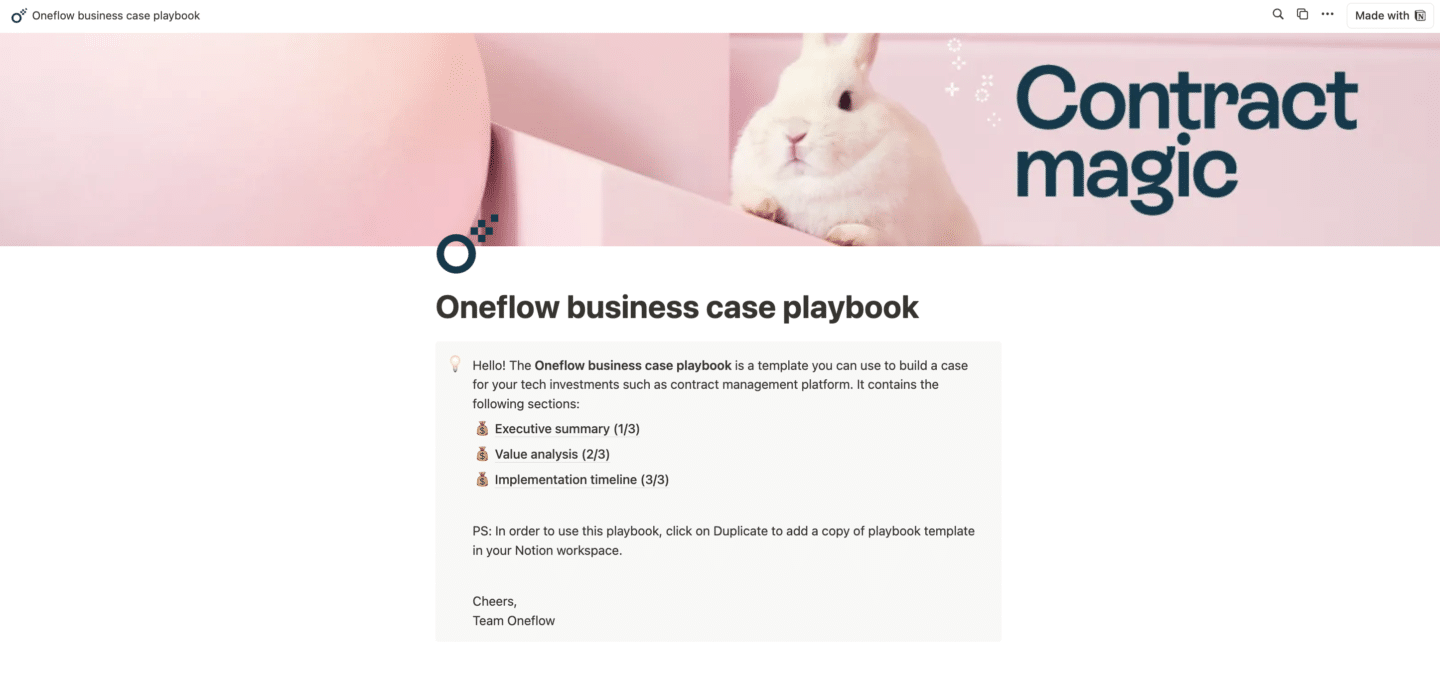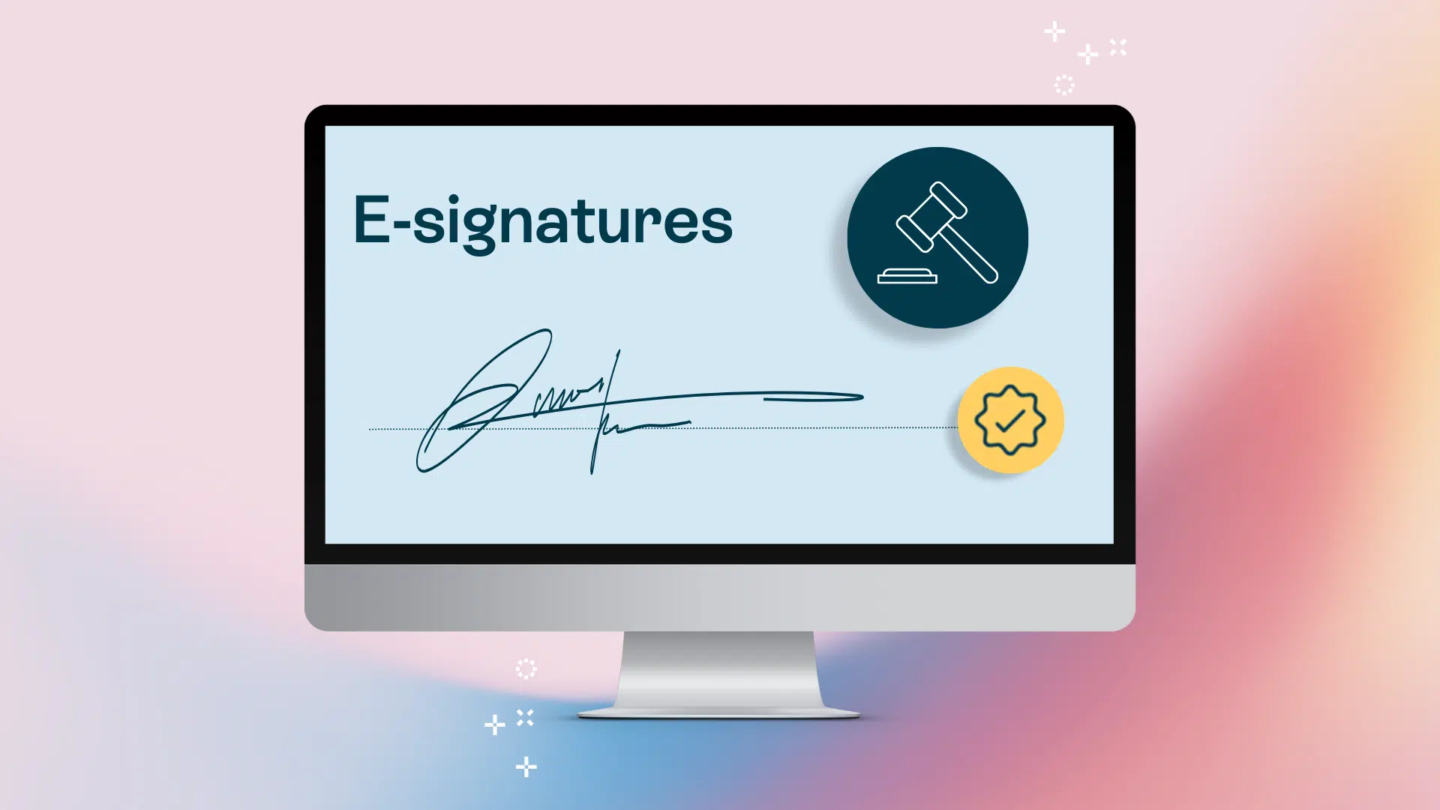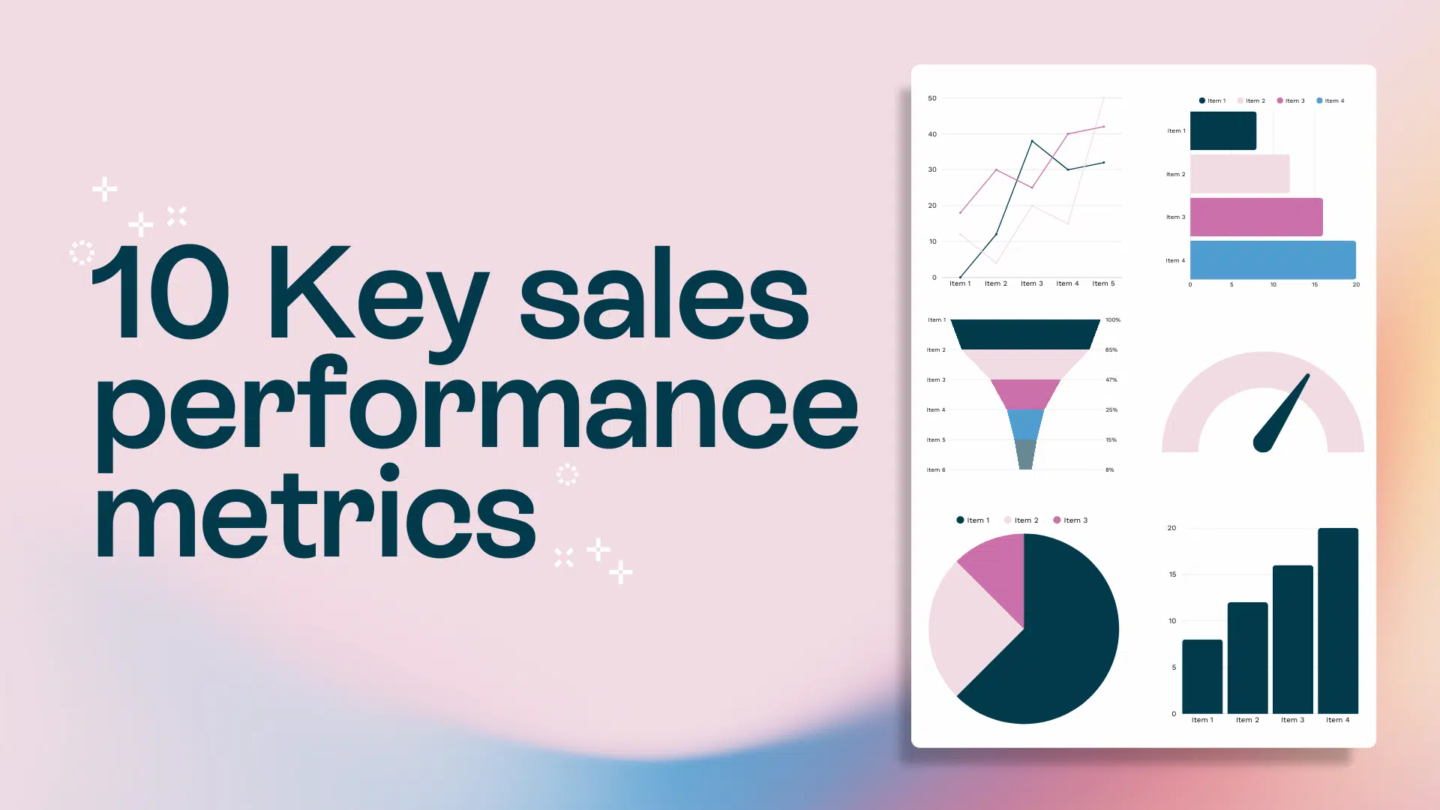You’ve identified the need for a contract automation platform—one that will streamline workflows, reduce legal and compliance risks, and boost efficiency across the board. But securing internal buy-in takes more than just enthusiasm.
To win over key stakeholders, you need a clear and structured business case—one that demonstrates value, return on investment (ROI), and strategic fit with your organisation’s wider goals.
This guide shows you how to structure an effective business case using the Oneflow Business Case Playbook as your foundation.

1. Executive Summary: Your One-Minute Pitch
This is your opening gambit. It should succinctly summarise:
- The problem: Challenges with the current contract process (e.g. inefficiencies, risk exposure, lost revenue).
- The solution: How a contract automation platform addresses these pain points.
- The value proposition: Benefits such as cost savings, time efficiencies, and stronger compliance.
- The call to action: What the decision-makers need to approve or support next.
💡 Pro tip: Keep this section brief but compelling—executives often read only this page.
Read also: What is contract automation? A complete guide
2. The Problem Statement: Why Change Is Urgent
Clearly define what’s not working with your current contract setup. Examples include:
- Manual inefficiencies: How much time is lost drafting, reviewing, and chasing approvals?
- Compliance risks: Are missed obligations or renewal deadlines a concern?
- Revenue loss: Are bottlenecks or errors preventing deals from closing?
📊 Data point: Organisations without contract automation lose an average of 9% of annual revenue due to poor contract management.
Using data from the Oneflow Business Case Playbook, quantify these problems to highlight the cost of inaction.
3. The Solution: Why Contract Automation?
Show how an automated contract platform directly addresses these issues:
- ✅ Faster contract cycles – Automates routing, reminders, and approvals.
- ✅ Lower risk – Provides full audit trails and compliance alerts.
- ✅ Centralised access – Keeps all contracts in one secure, searchable repository.
- ✅ Improved deal close rates – Removes friction from the sales process.
💡 Pro tip: Reference case studies of companies that have already benefited—especially if they’re in the UK or your sector.

4. Value Analysis & ROI Forecast
Decision-makers need numbers. Present clear metrics on:
- Time saved: e.g. “Contracts now completed 40% faster.”
- Admin cost reduction: e.g. “Estimated savings of £X annually on manual processes.”
- Revenue improvement: e.g. “5–10% uplift in renewal rates or deal closure speed.”
📊 Example: Organisations using contract automation reduce time spent on contract management by 30–40% and save thousands per year in admin costs.
Use the Oneflow Value Analysis Framework to tailor ROI projections to your organisation’s size and structure.
5. Implementation timeline & next steps
Stakeholders will want clarity on what adoption looks like. Outline the key phases:
📅 Phase 1: Discovery & vendor selection (1-2 months)
📅 Phase 2: Implementation & system integration (3-6 months)
📅 Phase 3: Staff training & full rollout (Ongoing)
💡 Use the Oneflow Implementation Timeline visual to support this section and manage expectations.
Conclusion: A Business Case That Drives Action
A solid business case doesn’t just justify a purchase—it provides a structured path forward. It frames the opportunity, quantifies the gains, and addresses the risks of doing nothing.
📥 Download the Oneflow Business Case Playbook and use it to build your case, calculate ROI, and define a clear implementation plan.








